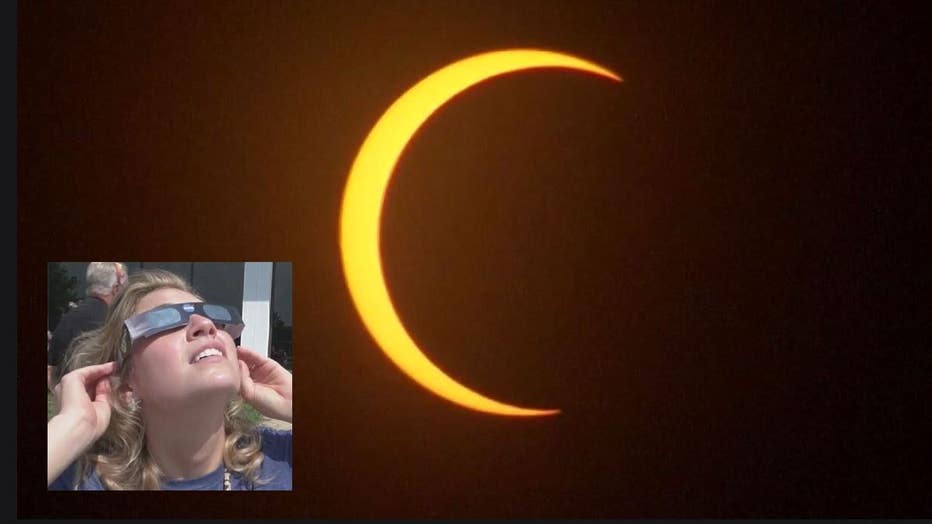The coming solar eclipse is exciting, but it can be dangerous - without the right eyewear
(FOX 2) - Once every year or two a total solar eclipse happens - the moon's shadow on the earth is so small that at any given location, it only happens once every 400 years. This next one on April 8, is going to be very close to Metro Detroit.
Here's the most important part - if you want to see it, but you don't have special glasses - don't look up. Even a sliver of sun can do damage. Special glasses are needed - regular sunglasses are useless.
Ophthalmologist Dr. Xihui Lin with the Detroit Medical Center is passionate about eye protection, for good reason. He has published research on post-eclipse eye injuries because he sees so many of them.
"It's like having a laser burn onto your retina," he said.
Deena: "So that's permanent eye damage?"
"It is permanent eye damage," he said. "We see this after every eclipse."
When you look the sun that light is making it's way to the back of your eye, it is called the retina.
"When looking at the light of sun, your eye focuses all that energy onto your retina," he said. "Your eye basically concentrates that energy onto your retina.
"So when you stare at sun for even more than a couple seconds, you end up focusing that energy so harshly onto your retina, that essentially you get a thermal burn."
The thermal burn doesn't hurt, but it will send you to the eye doctor wondering why you have suddenly blurry vision or a blind spot.
"Oftentimes after an eclipse we see a lot of patients coming in from staring at the sun too long," said Dr. Lin. "With a blurry spot or a missing part of their vision. Especially in this situation, sort of the center part of your vision, it is very noticeable."
Now if you make it to the path of totality or full eclipse, yes you can take a quick peek.
"If you are in the path of totality, there are a couple of minutes when it is totally dark," Lin said. "Yes, during that period you can take off your glasses, and then immediately afterward you have to put your glasses back on."
out: put them back on."
Remember wherever you get your glasses, open them up and look for the ISO on the arm. The number you want to remember is 12312-2. That means the glasses meet safety requirements - and you won't have any eye damage.


